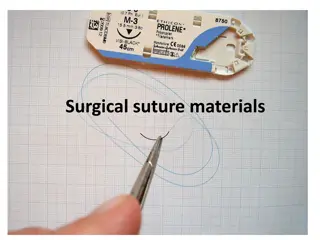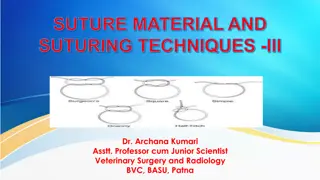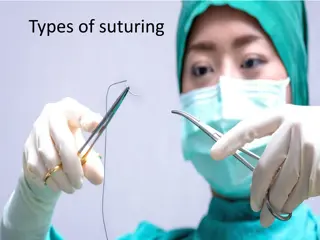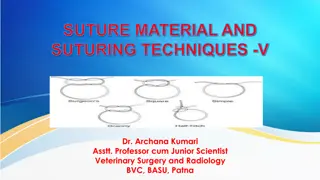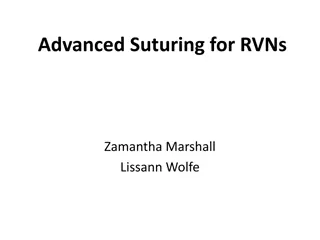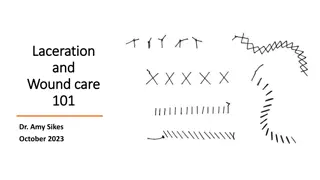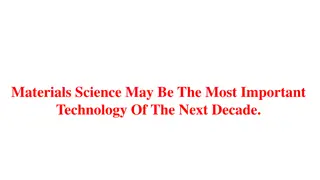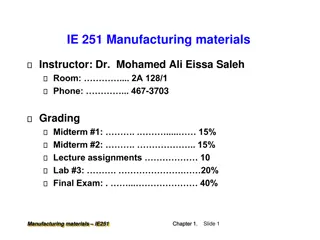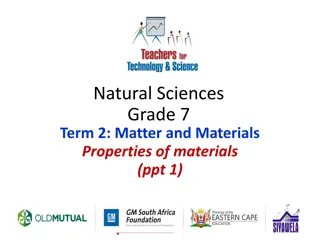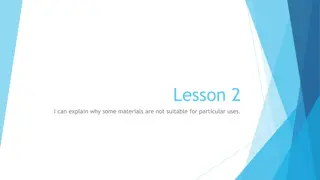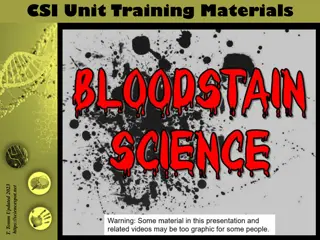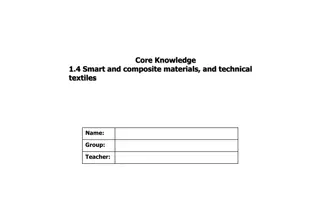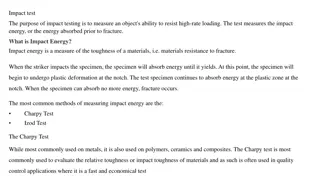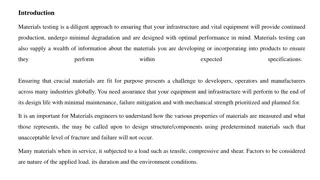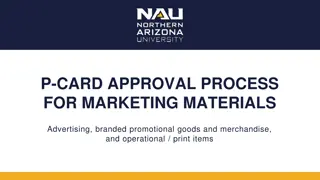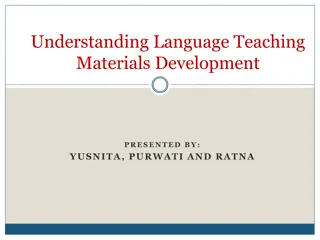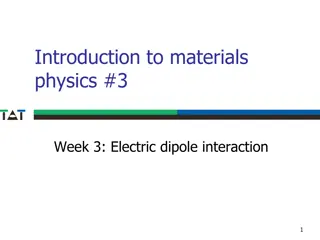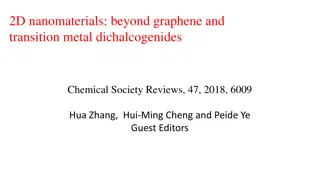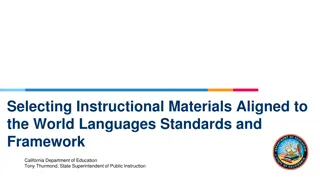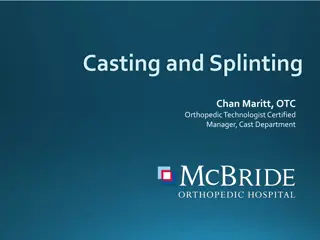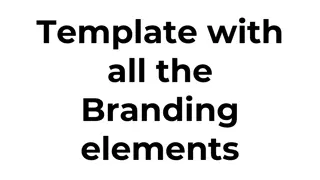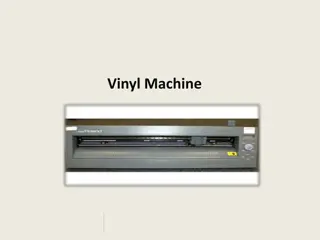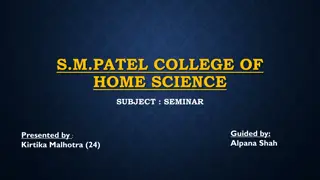Comprehensive Guide to Suture Materials and Techniques
Understanding suture materials and techniques is vital in wound healing. This guide covers the history, properties, and applications of sutures, as well as contraindications and timelines for different tissue types. It explains the use of suture needles, needle holders, and different types of sutures based on tissue types. Visual aids illustrate the concepts discussed, making this guide a valuable resource for medical professionals.
Download Presentation

Please find below an Image/Link to download the presentation.
The content on the website is provided AS IS for your information and personal use only. It may not be sold, licensed, or shared on other websites without obtaining consent from the author. Download presentation by click this link. If you encounter any issues during the download, it is possible that the publisher has removed the file from their server.
E N D
Presentation Transcript
Defined to be a device or contrivance to keep the wound edges together to facilitate healing by first intension. Historically Ants held over the wound and when the cut edges were grasped by its mouth parts, it was decapitated. Death grip kept the edges close. (10 century BC) Thorns passed through both edges of the wound and stayed in place with plant fibers in circle or figure of 8 fashion. (African tribes) Historically
Easy to handle Predictable behavior in tissues Predictable tensile strength Sterile easily sterilizable Glides through tissues easily .smooth Secure knotting ability Inexpensive and easily avialble Minimal tissue reaction Non-capillary Non-allergenic Non-carcinogenic Non-electrolytic Non-shrinkage The ideal suture should allow the healing tissue to recover sufficiently to keep the wound closed together once they are removed or absorbed. healing tissue to recover sufficiently to keep the wound closed together once they are removed or absorbed.
To appose the wound edges To effect hemostasis To retain and prosthesis in place As material a tie or ligature Contraindications are infection, gross tissue loss, redness, edema, puncture wounds, bite wounds, virulent wounds, wounds involving tendon or vessels and wounds older than 6 hours (?)
Days: Days: Muscle, subcutaneous tissue or skin Weeks to Months: Weeks to Months: Fascia or tendon Months to Never: Months to Never: Vascular prosthesis
Suture needles Needle holder Rat tooth or thumb forceps
Eyed needle with suture Swaged on needle with suture
For muscle, fascia, hollow viscus For cornea or when tissue holding is poor For skin For subcut tissue to prevent needlestick injury
Criteria Absorbable Non Synthetic Natural Monofilament Multifilament Criteria Absorbable Non- -absorbable Synthetic Natural Monofilament Multifilament Few Catgut, PGA, PG-910 Silk, Nylon, Linen, Polypropylene, PDS Nylon, PGA, PDS, Polypropylene Silk, catgut Nylon, ss wire Braided and twisted silk Few e examples xamples absorbable
Absorbable and slowly absorbable Absorbable and slowly absorbable
derived from sheep intestinal submucosa and bovine intestinal serosa. Avaialble as multifilament. treated with formaldehyde to reduce its antigenicity and with chromic acid and pot. Dichromate to cause slow loss of tensile strength and decreases tissue reaction. absorbed by phagocytosis rapidly absorbable (unpredictable loss of strength) loses tensile strength (33% in 7 days, 67% in 28 days) complete removal from tissue may be prolonged (may become encapsulated and found years later) rapid premature loss of strength in infected wounds, after exposure to digestive enzymes, in highly vascular tissue, and protein-depleted patients (not good for abdomen wall!) good handling property when wet, good knot security (3 throws but ends need to be left long as tend to untie when wet) is economical but largely replaced by synthetic materials due to demerits.
Obtained from tail of young kangaroo, is absorbable by phagocytosis is very strong, good handling properties, better knot security than catgut non boilable, heat labile, sterilized by soaking in alcohol or carbolic acid, preserved in boiled linseed oil. has been used in joint capsule, ligament, tendon and hernia repair. Obsolete, expensive
obtained from bovine cecum to cover surface with peritoneal erosion to prevent adhesions not a true suture incites tissue reaction in plain and chromic form, unpredictably absorbed obsolete method replaced by autologous peritoneum or omental grafts Cargile membrane is an allograft and not a suture
is obtained from bovine fascia lata in the form of strips in glass vial fresh strips as auto or allo grafts have also been used has been used in correction of ptosis, hernia repair mainly perineal hernia when internal obturator is found too week not a popular method
made of a glycolic acid polymer absorbed by hydrolysis rapidly absorbable most of the tensile strength lost within 2 weeks of implantation removed from the body within 3-4 months more rapid absorption in alkaline environment (eg. urinary bladder) significant tissue drag, may cut delicate tissues available with coating as coating decreases drag poorer knot security (need extra throws) Stronger than chromic gut with more predictable strength loss and less tissue reactive can be used to close clean tissue layers that regain sufficient strength within 7-10 days
composed of copolymer of glycolide and epsilon-caprolactone rapidly absorbable by hydrolysis loses tensile strength quickly (50 % within 7 days) completely removed from body within 4 months initially very strong (strongest of absorbable) initial strength allows selection of 1-2 sizes smaller than would normally minimal tissue reaction soft, pliable material with excellent handling, minimal tissue drag good knot security 4 throws for a secure knot 5 throws at the start and 6-7 at end of continuous pattern used for soft tissue suturing when prolonged wound support is not necessary (subcutaneous and intradermal layers) Braided multifilament
composed of copolymer of glycolide and epsilon- caprolactone rapidly absorbable by hydrolysis loses tensile strength quickly (50 % within 7 days) completely removed from body within 4 months initially very strong (strongest of absorbable) initial strength allows selection of 1-2 sizes smaller than would normally minimal tissue reaction soft, pliable material with excellent handling property, minimal tissue drag, good knot security used for soft tissue suturing when prolonged wound support is not necessary (eg. subcutaneous and intradermal layers) monofilamentous
composed of paradioxanone polymers absorbed by hydrolysis slowly absorbable, over 50% strength remains after 6 weeks complete removal from the body up to 6 months strength maintained in alkaline environment (suitable to close urinary bladder) minimal tissue reaction acceptable handling qualities but larger sizes are stiff, minimal tissue drag, reasonable knot security 4 throws for secure knot 5 throws at start and 6-7 at end of continuous pattern popular choice for general soft tissue suturing rcommended when prolonged tissue support desired Monofilament and strong with very good tensile strength
composed of glycolic acid and trimethylene carbonate absorbed by hydrolysis slowly absorbable, 50% tensile strength lost by 3 weeks, complete absorption takes 6-7 months retains strength in alkaline environment (can use for urinary bladder closure) strength similar to polydioxanone, minimal tissue drag, Stiff, tends to conform tissues to suture rather than conforming to tissues 4 throws for secure knot 5 throws at start and 6-7 at end of continuous pattern more economical than PDS handling characteristics have limited use in small animals but could be selected for most soft tissue suturing Monofilament, slowly absorbable, very strong
Non absorbable Non absorbable
cotton thread is an excellent suture material when used in clean wounds. the lack of springiness or stretching quality causes many ligatures to be broken at first, but this same quality prevents the tying of tissues too tightly. No. 60, 50, and 30 thread is used as ligatures and sutures, the finer size for most ligatures, the larger size for sutures. good handling properties and knot security. gains strength when wet has capillary property .never used in contamination In suturing layers of tissue as the peritoneum and fascia of the abdominal wall. never on ruminant GIT or hollow viscus Cotton may be used to approximate skin edges of a clean wound but must be protected with sterile dressing. can be sterilized by autoclaving but not a material of choice except in emergency. multifilament twisted
obsolete, was used in 19th century before microbes were known brittle, poor handling properties and knot security, tissue drag poor strength, low tensile strength in an experimental study in 2013 it was found to be good for external application after boiling sterilization and thus may have a role in cosmetic surgery monofilament
derived from silkworm cocoon technically nonabsorbable, slowly loses tensile strength over 6 months. May be completely absorbed after 2 years not recommended if prolonged strength or persistence is desired (e.g. securing a prosthetic device) induces significant tissue reaction excellent handling characteristics good knot security economical should NOT use in infected or contaminated areas potentiates infection (less bacteria required to induce infection) harbor bacteria within braid leading to persistent infection uncommonly used use largely replaced by synthetic monofilament materials Multifilament twisted or braided
composed of synthetic twisted multifilament polyamide encased in a smooth sheath very strong somewhat stiff to handle reactive when used in skin (increased if casing breaks) should NOT be buried because of high rate of draining tract formation economical primarily used as a skin suture in food animals Multifilament in a casing
composed of synthetic multifilament polyester very strong, retains tensile strength when implanted significant tissue drag coating improves but decreases knot security moderate tissue reaction when implanted contraindicated in infected or contaminated wounds potentiates infection bacteria reside within braid leading to persistence of infection and chronic draining tracts primarily used for tendon and ligament repairs because of excellent strength (extracapsular cruciate repairs) results in significant incidence of chronic draining tracts use gradually being replaced by monofilament options Multifilament, non absorbable, braided
available as both monofilament or multifilament composed of a polyamine monofilament form is inert with minimal tissue reaction nonabsorbable by definition but loses 30% of strength within 2 years of implantation multifilament form is uncommonly used, stiff and looses strength after 6 months significant memory (retains shape), especially in larger sizes knot security is relatively poor so care necessary to ensure secure knots 4 throws required for a secure square knot additional throws necessary for continuous patterns (5 on beginning knot and 6 on ending knot) suture ends may be sharp may cause trauma mainly used as a skin suture, but can be buried if necessary Monofilament is popular skin suture, economic
composed of a copolymer of polyglycol and polybutylene terephthalates good tensile strength, strength maintained when implanted slippery to handle, more flexible and elastic than polypropylene or nylon minimal tissue reaction reasonable knot security but need to ensure throws adequately tightened nice handling qualities once experience gained with knots mainly used as a skin suture, but can be buried if necessary monofilament
composed of a propylene polymer derived from propane gas not as strong as nylon retains initial strength when implanted minimal tissue reaction minimal tissue drag, best knot security of synthetic monofilaments, very nice handling qualities least likely of the monofilament nonabsorbable sutures to potentiate infection or induce thrombi used as skin suture and if need to permanently implant suture (prosthetic device) Monofilament, least reactive, costly
Mis Misc. methods c. methods
SS, tantalum (a rare metal), silver, copper, aluminium, vitellium (cobalt, chromium & molybdenum alloy) wire have been used as suture. Others have historic importance only. SS and tantalum are still in use. Tantalum is for neuro or vascular anastomosis. SS has many uses. Surgical stainless steel suture is a nonabsorabable 316L stainless steel available as on needle sterile or roll roll can be autoclaved indicated for use in abdominal wound closure (monoblock closure in infection), hernia repair, sternal closure and orthopaedic procedures including cerclage and tendon repair all metal suture have metal fatigue property (may break due to continuous movement) metal sutures are monofilament
absorbable metal clips of silver can be used as ligature staples may be used for skin apposition (titanium or ss staples) or for intestinal anastomosis (linear or circular stapler with knife) do not have the disadvantages of suture thread increased cost is one issue
Linear stapler for side to side anastomosis Skin stapler Skin stapled Circular stapler for end to end anastomosis
Anastomosis circular stapler Anastomosis linear stapler
Natural tissue adhesives based on proteins and peptides such as fibrin, thrombin, albumin (BioGlue combines purified bovine serum albumin and glutaraldehyde), collagen, and some lysine and other amino acid based derivatives. Cellulosic ethers (for example, hydroxy ethyl cellulose, hydroxy-propyl methyl cellulose, carboxymethyl cellulose) are natural and originally plant based adhesives. Limited application mostly artery and hypospadia repair. Synthetic tissue adhesives are mainly cyanoacrylate e.g. methyl cyanoacrylate, fluoro and isopropyl cyanoacrylates, n- butyl cyanoacrylate, 2-octylcyanoacrylates. Methyle cyanoacrylate is leads to granuloma. Should not be used on stellate lacerations, bites, punctures or crush wounds, contaminated wounds, mucosal surfaces and high-moisture areas. After cleaning, the edges are apposed and adhesive poured over it and spread with brush or spatula. Three coats applied. Not pushed in the wound (not as cementing material)
Correct method of using needle and needle holder Incorrect method of using needle and needle holder Correct method - palm grip of needle holder
Granny knot Square knot Surgeon s knot 2+1 loops
Suture patterns Suture patterns
Interrupted.. each suture is a separate entity sutures can be individually positioned and tightened more anatomic closure possible loss of 1-2 sutures does not affect the integrity of the closure time taking more suture material used e.g. simple interrupted, horizontal, vertical, cross mattress Infection if occurs may result in single stitch abscess Interrupted .. Continuous .. knots only at beginning and end less precise control of suture tension and wound approximation the entire closure usually fails if one knot fails major advantage is speed as only 2 knots uses less suture better at providing an air and water tight closure Infection if occurs may spread in whole length of suture Continuous ..
Appositional.. anatomically opposes the edges results in the fastest healing gives most cosmetic result loosely placed everting sutures Inverting .. turns incision edges inward desirable when closing hollow organ better seal against fluid leakage, minimizes exposed suture and adhesions but decreases the size of lumen avoid in skin as delays healing Lembert s, Cushing sutures Appositional .. Inverting .. Everting turns incision edges outwards results in delayed healing rarely indicated horizontal and vertical mattress sutures Everting .. ..
Simple interruptednote x and 2x Interrupted horizontal mattress suture (4 bite/U suture/Halsted everting mattress) Interrupted vertical mattress suture (4 bite)
Horizontal mattress suture Cross mattress suture/Cross stitch Vertical mattress suture
Continuous lock stitch (Fords interlocking/ Reverdin s continuous/ Blanket stitch) Simple continuous suture (Furrier s suture) Subcuticular suture


